Tales of Remarkable Young Girls Around the World
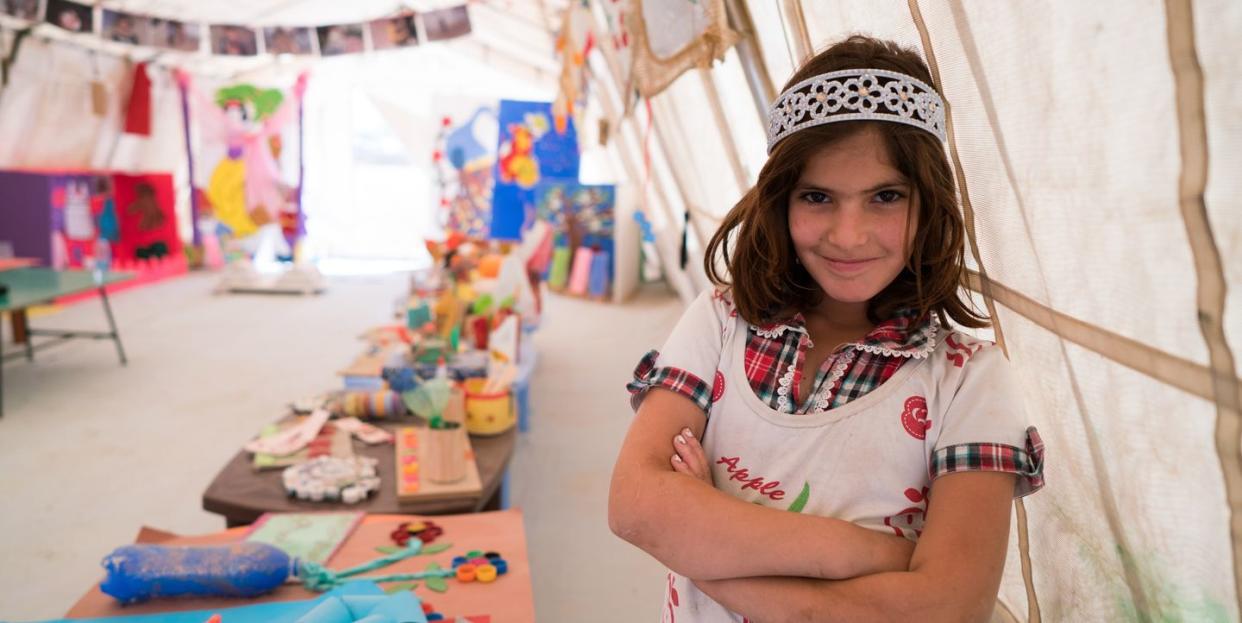
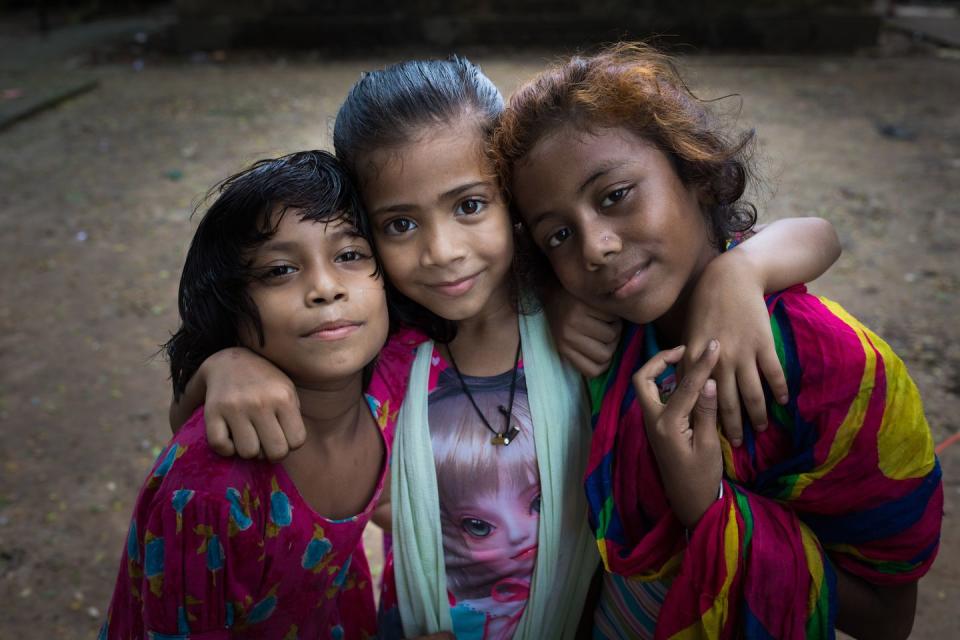
For millions of adolescent girls around the world, child marriage, early pregnancy, violence, lack of access to dignified menstrual hygiene, and barriers to a quality education are just a few of the daily obstacles they must overcome. Yet despite all odds, they manage to find their strength and grasp onto every opportunity for betterment. Through hope and resilience, these girls grow into formidable women.
To celebrate International Women’s Day, Elle partnered with UNICEF photographer Simon Lister to share stories of remarkable young girls around the world.
A masterful photographer, Simon’s passion has taken him to the most remote corners of the globe and he has witnessed first-hand the perseverance of the human spirit. His moving work with UNICEF has been documented in the Netflix series, Tales By Light. Through the lens, he manages to capture the heartbreak and unexpected joys of childhood in poverty.
"I have long admired UNICEF’s work and mission to reach the world’s most disadvantaged children in some of the toughest places," Lister told ELLE.com. "So, it was both a life ambition and an honor to to help UNICEF tell children’s stories through photography and film. Since then, I’ve travelled to countries including Bangladesh, Bolivia, Kyrgyzstan, Ethiopia, Lebanon, Mexico, Vietnam, and met many children that UNICEF is supporting with life-saving health supplies, vaccines, education, and protection from violence, exploitation, and abuse."
Below, Lister explains the story behind each photo.
Dulaly, Bangladesh
For the Netflix documentary series Tales By Light, I travelled to Dhaka in Bangladesh with UNICEF Goodwill Ambassador Orlando Bloom to meet children living and working in inner city slums. Dulaly is just 10 years old, but spends her days collecting garbage from train tracks to sell in order to support her family. The idea that girls of this age are working in hazardous jobs that put their health, education, and futures at risk is a lot to take in, but Dulaly had such a beautiful, positive spirit. With her own determination and UNICEF’s support, I have a feeling she will get back into the classroom and achieve her dreams to become a doctor.
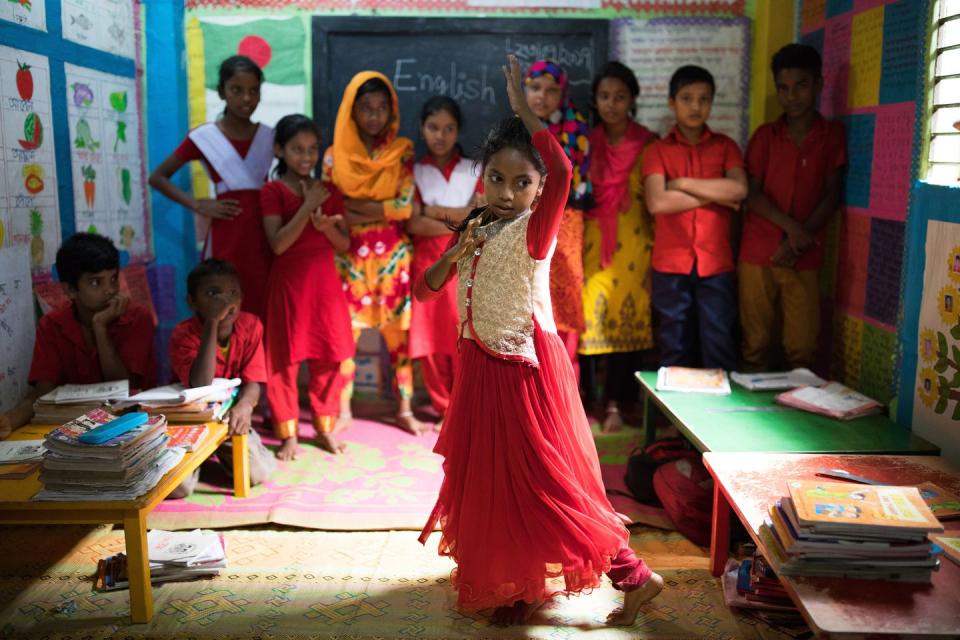
Young girl, Bangladesh
In Bangladesh, UNICEF, in coordination with the Government, has established almost 300 ‘Second Chance Education’ facilities in slum areas that give street children the opportunity to go to makeshift schools for a few hours per day, with a view to integrating back into mainstream schools. One exciting thing I witnessed in the classrooms was the excitement of the children eager and really wanting to learn. Here one of the school girls is demonstrating a traditional dance.
Women with primary education earn only 14 to 19 percent more than those with no education at all. By contrast, women with secondary education may expect to make almost twice as much, and women with tertiary education almost three times as much as those with no education.
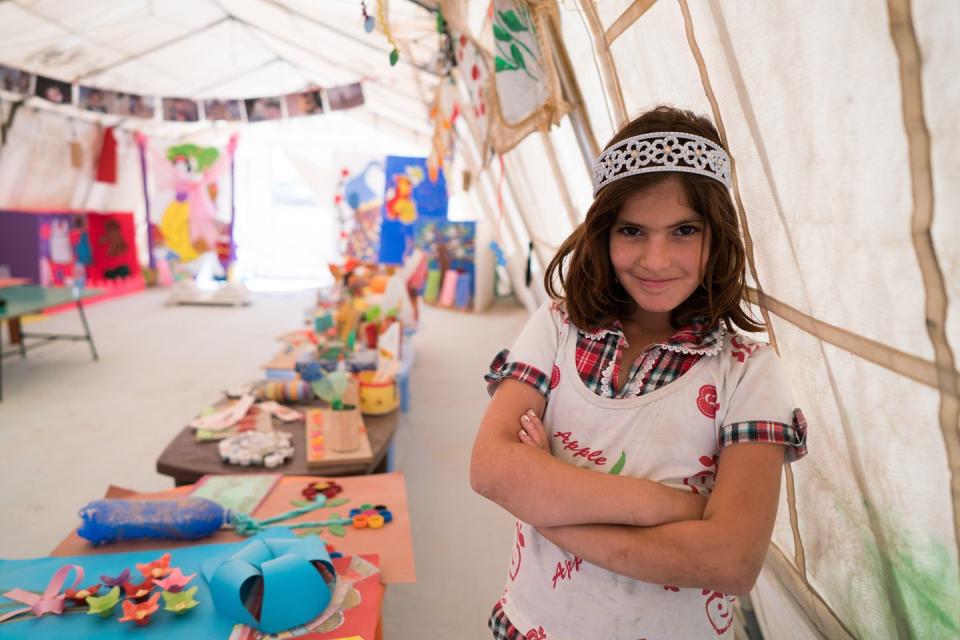
Diana, Lebanon
11-year-old Diana, originally from Homs in Syria, is now living in Lebanon’s Bekaa Valley. She is one of more than 2.5 million child refugees living in either Turkey, Lebanon, Jordan, Iraq or Egypt. Like every child forced to flee the conflict in Syria, she left behind friends, family, her home and her school, not knowing when she will be able to return. She’s pictured here at the Saadnayel Child Friendly Space. UNICEF set up these spaces for children to access psychosocial support. They are a safe place for Syrian children to go back to their routines - playing, learning, expressing their feelings, enjoying time with other peers - in an environment where they can feel safe, supported, and protected. Diana loves making woven baskets and she also loves painting and drawing. Having an environment like this in the refugee camp allows her to fulfill her dreams and gives her a happy place to play and learn.

Schoolchildren, Ethiopia
There is so much happiness and excitement radiating from this photograph, taken at Hadew primary school in Jijiga, Ethiopia. Their smiles and laughter really shine through in the photo, but what I distinctly remember from photographing these young students was their sense of pride as they stood at the front of their classroom. Here they will build the foundation needed to become future engineers, entrepreneurs, scientists, teachers and doctors. There’s no doubt that education is the single most potent equalizer of opportunity for girls. Not only does school provide girls with a ladder out of poverty and a path to a stable and promising future in the long-term, it gives them a safe place where they can create, analyse, socialise, learn about themselves, and turn their dreams into reality. We know that education can make or break a child’s future so it’s hard to fathom, let alone accept, that across the world more than quarter of a billion children continue to be denied their right to an education.
If all adult women completed secondary education, the added financial value to global economies is estimated to range between US$ 15 trillion to US$ 30 trillion.
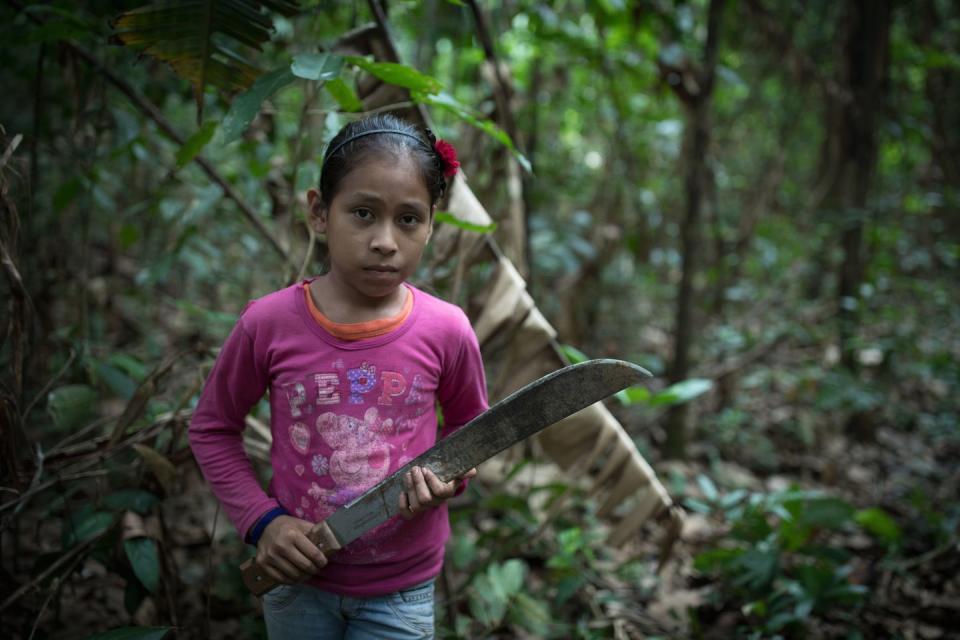
Belqui, Bolivia
For Tales by Light, we also travelled to Bolivia, a country with high rates of child labour. This is 11 -year-old Belqui pictured in the Amazon jungle holding a machete she uses to chop down foliage and also to break open the Brazil nut coconut shell to retrieve the nuts from inside. For me, the contrast of Belqui’s Peppa Pig t-shirt with the weapon she is holding brought an added depth of sadness to the photograph. I wondered what joy and play she had experienced; had she ever watched cartoons like other children? When I speak with girls like Belqui living in poverty, I always ask what their hopes are. Many reply with the same answer; they want to grow up to be teachers and doctors so that they can help other people. My hope for all the children I meet who have to work in dangerous jobs like this one, is that they can get the chance to attend a school and have an education.
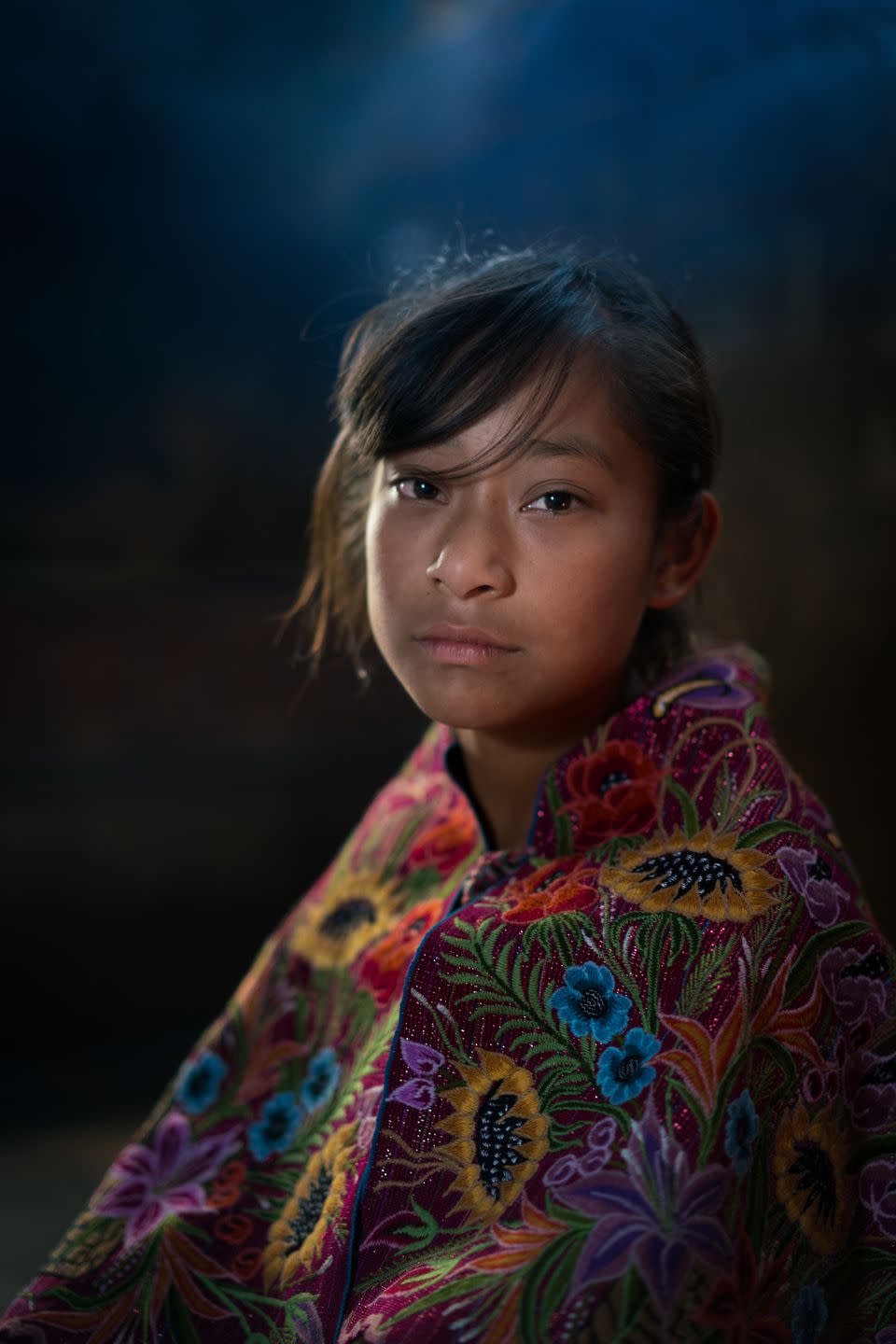
Lucia, Mexico
11-year-old Lucia lives in Zinacantan Chiapas, one of the poorest regions of Mexico. For this portrait, she is wearing a traditional hand-sewn cape of jewel tones in bright colors. Her mother is a master weaver and part of a local organization representing the rights and equality of local weavers. The rural design school - Fabrica Social - provides workshops and tools to women in Mexico, empowering them with skills and training so that they can grow their businesses and support their families.
In 2017, an estimated 22 per cent of young people globally were not in employment, education or training, about 77 per cent of which were female.
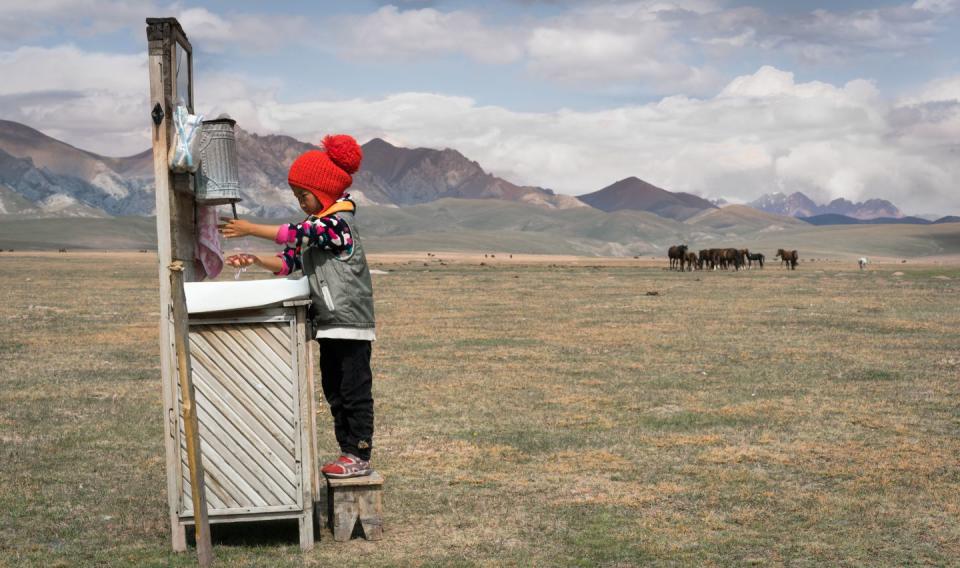
Ainazik, Kyrkgyzstan
This picture was taken in the remote Naryn province in Kyrgyzstan. I remember the arduous journey through the mountains to reach 5-year-old Ainazik, who moved with her family to Son-Kul pasture for summer. Ainazik’s family, as other families at the pasture, live in a yurt – portable tents used by nomad communities. To have access to water, shepherds place their yurts close to water streams. Next to the yurt, the family placed a washing-stand, which Ainazik is filling with water. Generally, in Kyrgyzstan, only 21 per cent of the population have access to central water supply systems, which is even lower in rural areas like this one. In up to 59 per cent of households, women are primarily responsible for collecting water, and in some households, it is children below age 15, putting them at risk of not attending school and of deadly diseases. In 2016, 121 children under-five years of age died from diarrheal diseases due to poor sanitation, poor hygiene, or unsafe drinking water. UNICEF works with governments and local authorities to ensure children have access to hygiene and sanitation services, like the one you see here, that help girls have a healthy life.
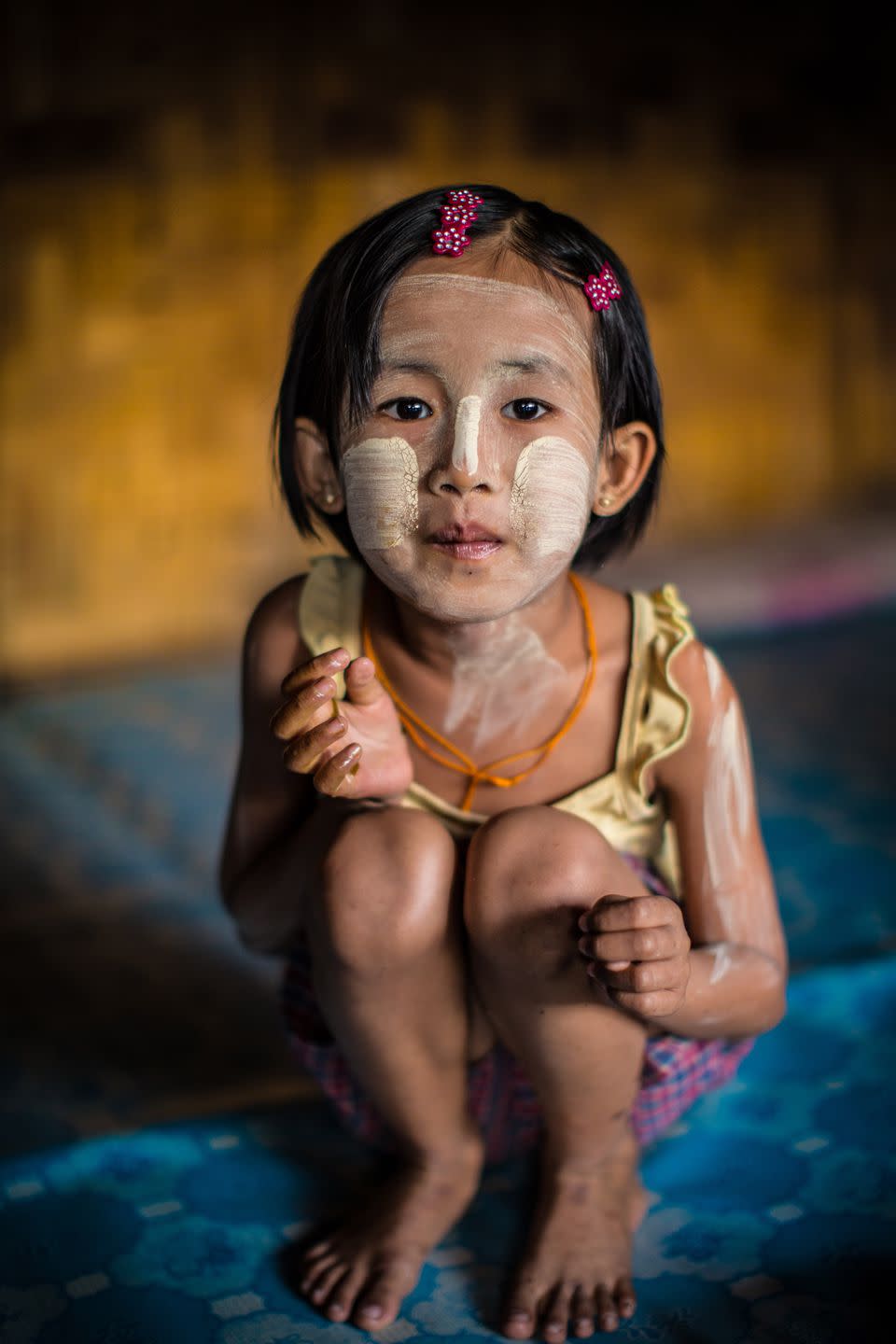
Young girl, Myanmar
In Yangon I visited a local legal slum on the edge of the city. The people here were very friendly, and I was told that I was one of the first visitors from overseas to pass through. I met a family who invited me into their home, their daughter pictured here was eating her dinner as you can see by her sticky fingers. The colors of the walls were rich and having the evening light gave way to a beautiful portrait of this girl in her lounge.
Globally, the total number of girls married in childhood is estimated at 12 million per year. When a girl is forced to marry as a child, her odds of finishing school decrease while her odds of experiencing domestic violence and becoming pregnant in adolescence increase.
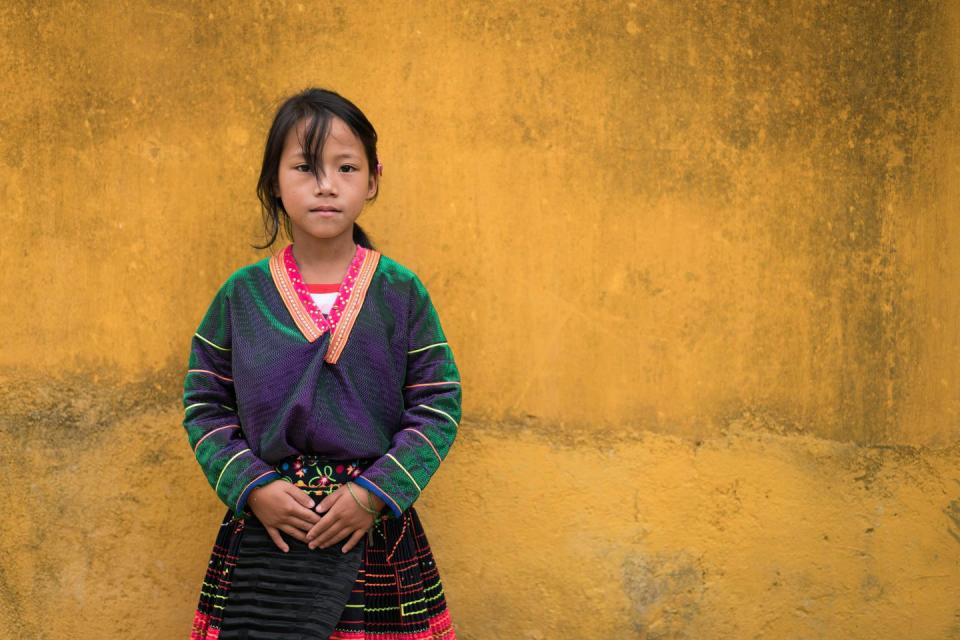
Vang Thi Nu, Vietnam
7-year-old Vang Thi Nu belongs to the Mong ethnic minority group, who normally live in remote and hard-to-reach areas. Girls in ethnic minority groups in Vietnam are at increased risk of child marriage. UNICEF works with the government to improve quality education for all children, especially for ethnic minority children and retain children in school as one of the ways to prevent girls from early marriage.
I met Vang Thi Nu at school. The love and dedication to the children here was a joy to watch. The teachers and staff at the school all had beautiful values to ensure the children had a playful spirit while at school. It was lovely to see all the children here enjoying the opportunity to play and learn in this environment.
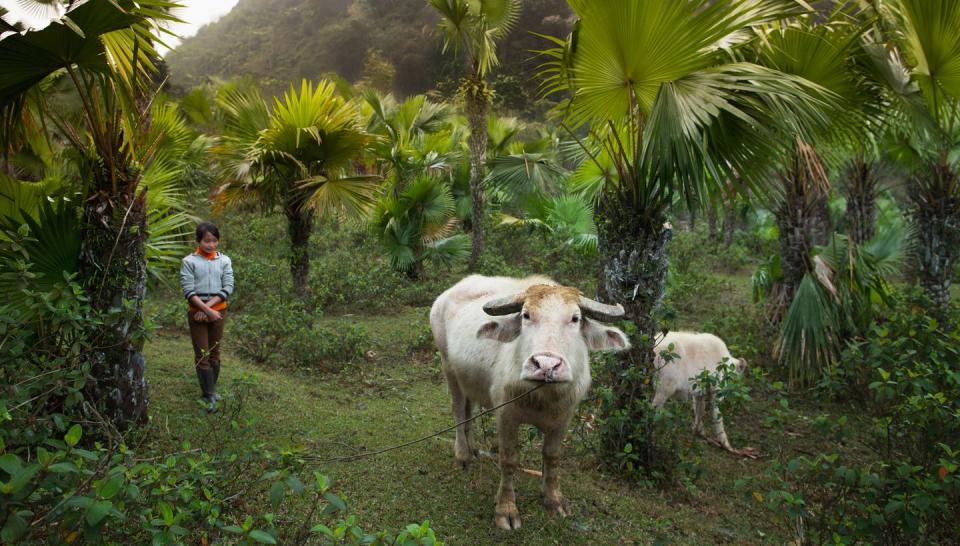
Young girl, Vietnam
In this photo, a girl attends to her family’s cattle as they feed in the hills of Sapa, Viet Nam. This is a common job for children in this region and can also deny the opportunity to get an education. Owning cattle for the family is a valuable asset and provides for an income in these regions where other means of earning can be difficult.
Worldwide, girls aged 5 – 9 years old and 10 – 14 years old spend 30 per cent and 50 per cent more time, respectively, helping with household chores than boys of the same age, taking them out of the classroom and preventing them from finishing their education.
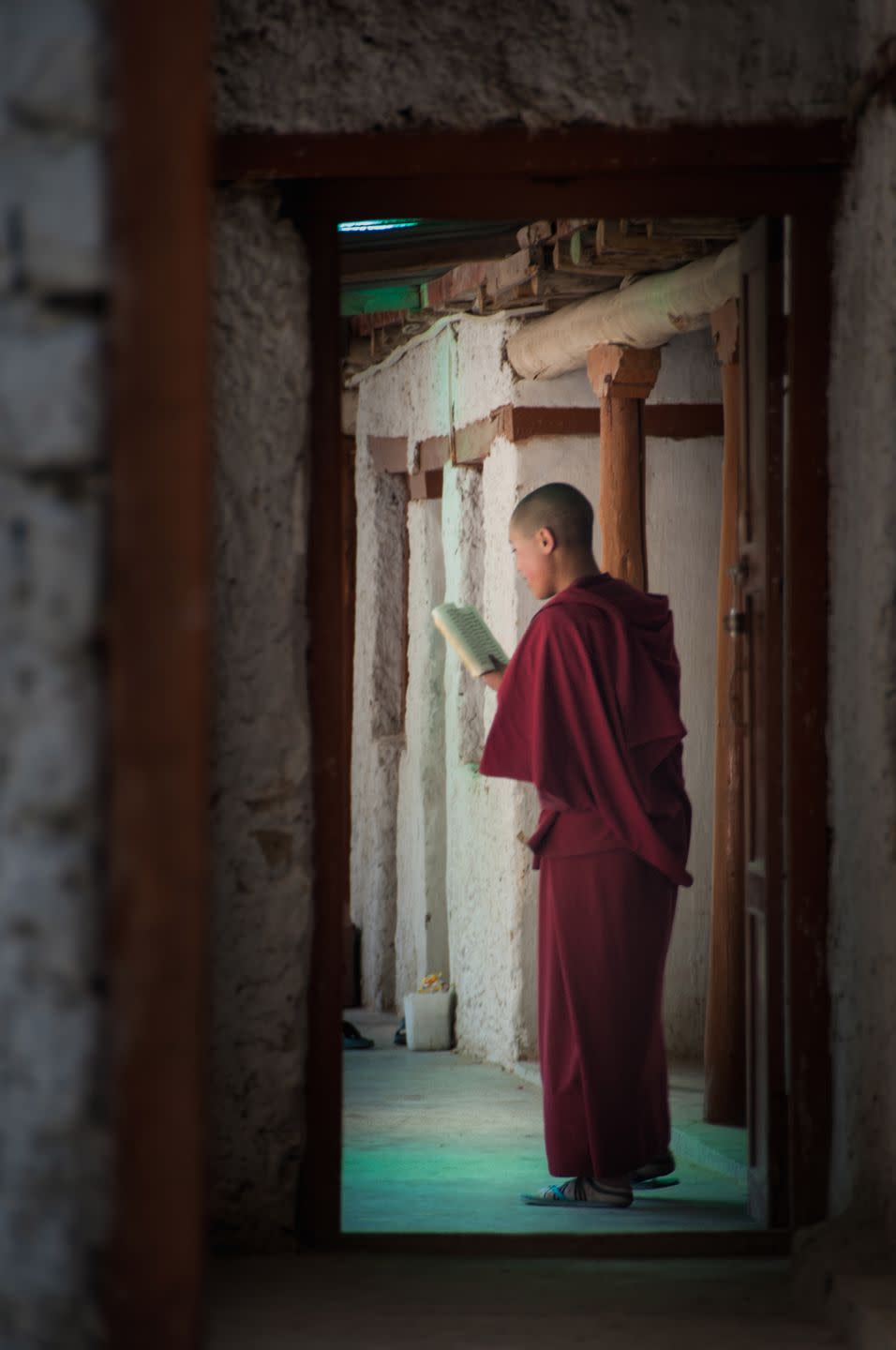
Buddhist Monk, India
I met this young Buddhist girl monk in the remote Chulichan Monastery- high in the folds of Himalayan Kashmir India. At a later stage in their life, some women will move and work in the slums of India’s most dense cities, which is a stark contrast to the life they have high up in the mountains. Due to the remoteness and cold seasons throughout the year this monastery is completely self sufficient and raises the girls on strong Buddhist values.
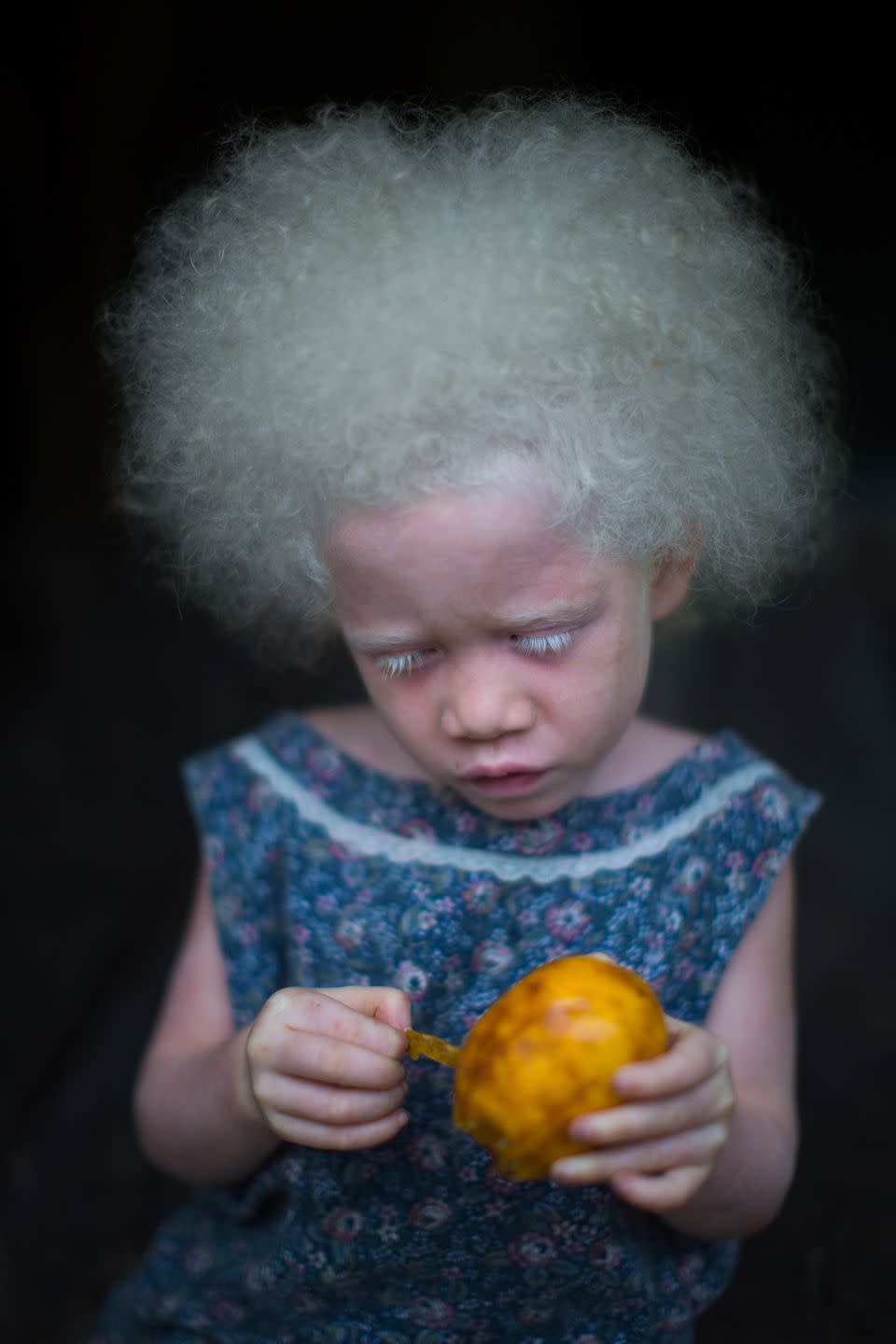
Young girl, Papau New Guinea
This photo was taken on a trip to the north rim Islands of Papua New Guinea. On one island named Emirau, I came across this beautiful young Albino girl living in a very poor village. She was almost fully blind and peeled a piece of fruit while I took her photo in the doorway of her grass hut.
To help UNICEF empower young girls around the world, click Girls Rule! to donate now!
Tales by Light is available to stream on Netflix: www.netflix.com. The programme documents Simon’s trip to Dhaka, Bangladesh with UNICEF Goodwill Ambassador, Orlando Bloom to highlight the plight of children living and working in slums.
UNICEF promotes gender equality by working to ensure every girl starts and completes her education, is protected from school and gender-based violence, can safely manage her monthly menstrual cycle, access health services, and is empowered with information and fundamental life skills needed to achieve her dreams. To find out more about UNICEF’s gender equality work, visit: https://www.unicef.org/gender-equality
('You Might Also Like',)

